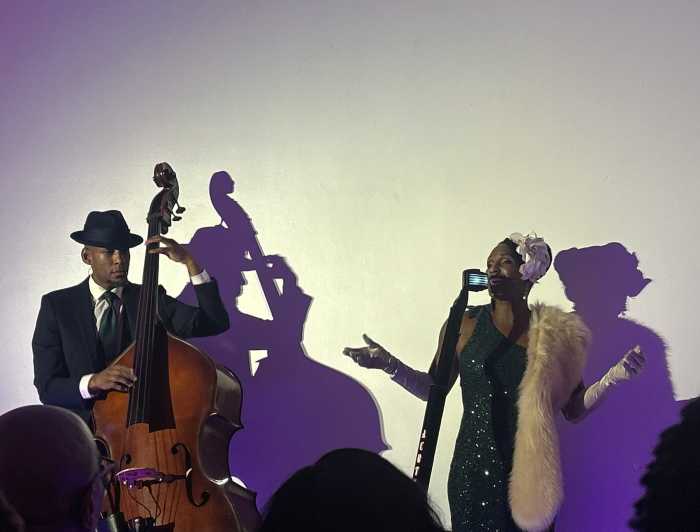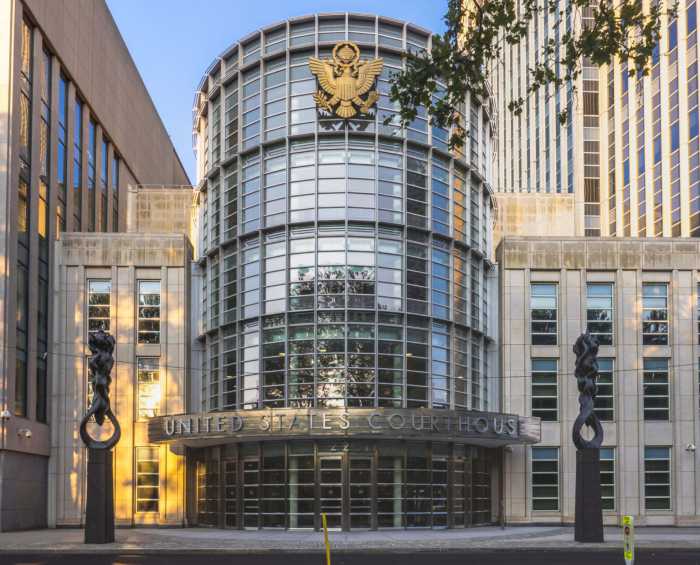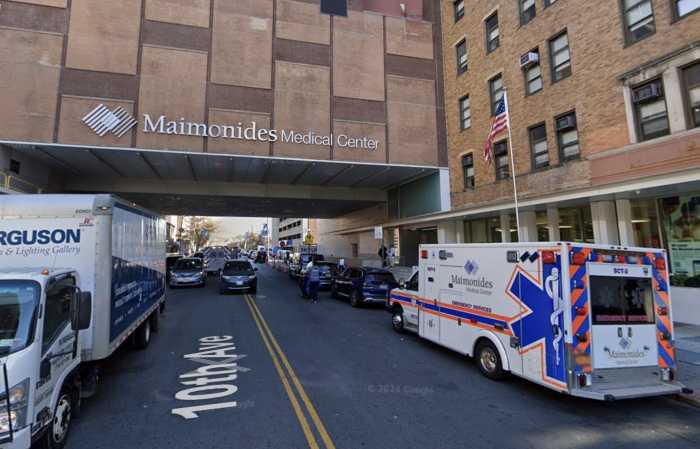Southside United H.D.F.C., better known as “Los Sures,” is a community-based, non-profit organization that has served as an integral part in rebuilding the South Side of Williamsburg, Brooklyn since 1972.
Los Sures has undertaken large-scale rehabilitation of many buildings, allowing families and individuals to live comfortably while creating an aesthetically pleasing neighborhood. Additionally, the organization provides a multitude of much-needed services, including a senior center and a food pantry.
Kings County Politics (KCP) recently sat down with Los Sures Executive Director Ramon Peguero, an affable intelligent product of Williamsburg since the days when the neighborhood was known more for its abandoned buildings and high crime rates than for its artesian cheeses and hipster ambiance.
Peguero, originally from the Dominican Republic, attended P.S. 17, between North 6th Street and Broadway. He then went to Clara Barton High School in Crown Heights, SUNY Stony Brook for his Bachelor’s, Metropolitan College for his Master’s in Administration, and CUNY’s Queens College for his doctorate in law.
The following interview took place at the Los Sures offices on South 5th Street in Williamsburg.
KCP: So please give me your quick overview of Los Sures.
Ramon Peguero: Well, Southside United-Los Sures has been around since 1972. We are celebrating our 45th anniversary this year. And we started off as a grassroots organization that was trying to push back against the community breakdown that we saw. There were many burned down buildings and a lot of landlords were abandoning their buildings. A group of parishioners from the two local churches, St. Peter’s and Transfiguration, led by the priests of those churches, came together and organized to take care of the repairs over these buildings. Southside United-Los Sures, since then, has been advocates for affordable housing. We started off being one of the first organizations in the city of New York to respond to the city’s call to rehabilitate buildings. As you can imagine, in the early 1970s the city was almost bankrupt.
The mayor made a call to rebuild the community and we were one of the first groups to respond. Since then we have been developing and growing. We have developed close to over 4,000 units. We also manage affordable housing. We have grown to have a social services department that handles the senior center, a food pantry, a food distribution center, two senior buildings, and now a hydroponic farm. We even have chickens that we raise.

All in the Williamsburg area?
All over the Williamsburg area.
I recently read that the De Blasio Administration has been trying to take back some co-ops that the city had given to non-profits and individuals willing to rehab some of these abandoned and burnt out buildings from back then. Does that affect Los Sures?
Well, in our history at Southside United-Los Sures, we have been working with co-ops for the past 45 years. We have strengthened those co-ops and their boards to become very strong and very active.
You know, you always get this perception of Williamsburg as now all gentrified and everybody’s pushed out, and in Bushwick, now they’re saying it’s happening. Are there people still struggling in Williamsburg?
I think that’s the biggest myth that is still out there. The fact is that Southside United- Los Sures, just this past summer, we did a food giveaway, and we gave food to 25,000 people that came to our food bank. And every week in our food pantry we see 300 to 400 people. We also assisted in the marketing of the applications for affordable housing units along the Brooklyn waterfront at the site of the old Domino factory. 85,000 people applied with our help.
For how many units of housing?
For over 100 units of affordable housing, 85,000 people applied.
Was it very low or low? Or moderate income?
It was low, very low, and moderate income. So it might be 25% really low to 60% really moderate. To have 85,000 people apply for over 100 units of affordable housing, to have 25,000 people come to Southside United-Los Sures’ food pantry looking for produce on a given week, does a lot to push back against the notion that the gentrification happening in Williamsburg has eliminated poverty. We need to make the message clear that poverty exists in Williamsburg. We know that our services are needed. Every day we have more people coming to us asking for help. Now that there’s so much money coming into Williamsburg, there’s more in the palms of landlords and there’s more need for protection of the poor.
It seems like there’s just not many affordable units in these buildings.
Well, we definitely need to take a look at how we’re going to develop the properties that exist. I do not think that the 80-20 model, meaning that for every 80 market-rate units built by private developers, 20 will be set aside for affordable units, works. Although I commend the city for ensuring the 80-20 caveat, ultimately that model does not work because at that rate, sooner or later the community is going to be drastically changed because there will never be enough affordable housing units to catch up with the expanding market-rate units being built. I believe that we should be looking at ways of expanding the affordable housing stock that we have. Sometimes it is not only about the developing of affordable housing units. We should re-develop the affordable housing stock that we already have.
How are you going to do that?
Well, I would propose that we look at zoning and properties. The properties that Southside United-Los-Sures manages are 100% affordable. They have regulatory agreements in place so that the units will remain affordable in perpetuity. We are looking to have perpetual housing that hopefully will be built upwards so that if we have a six-story building it can go up to 12 stories. Such a model would build on what currently exists so money would not be spent on acquisitions.
That’s an interesting idea. A zoning variance for non-profits that manage affordable housing. Have you spoken to local City Council Member Antonio Reynoso about this?
I brought it to his attention and he thought it was a very interesting idea and that we would continue the conversation.
I mean they’ve done other zoning, you know, MIH (Mandatory Inclusionary Housing) right? They haven’t talked about inclusionary zoning for existing nonprofits or affordable housing. Am I correct?
That’s correct. Well, the issue that has to be looked at, which Southside United-Los Sures has been trying to push, is for investment in nonprofits that are working exclusively to preserve and develop affordable housing units, similar to those developers that are in it for the money. It makes a lot of sense for the city to invest in nonprofit developments because whenever we get developers’ fees, or whenever we get any money from our developers, it goes right back into the community or the services that we provide. When a corporate developer gets money it goes into their pockets.
How has the De Blasio administration reacted to this argument?
Well unfortunately we had a change in commissioners. In conversation that I have had with Antonio Reynoso he felt that it was a very interesting proposition. So we need to continue that conversation.
What would it take to move it forward besides conversing?
Well obviously we need a push by, I think, the De Blasio Administration. I think that they just have to see the benefit of doing that. New York City, if we don’t want to continue to have a situation of homelessness, we have to figure out a way of balancing housing priorities. And land, as you know and I know, is very scarce, and the only way to develop is up. I think this is a good way to ensure opportunity development. It doesn’t mean it costs a lot more as far as acquisition of land. A lot of times the acquisition of the land is what brings the price up. These lands and these buildings already exist.
How many buildings do you have?
Right now we have 25.
And they’re all around here?
Yes.
I’m surprised no one has put any legislation forward on this. Is there any legislation being talked about with some kind of inclusionary zoning for nonprofits?
Not to my knowledge, no.
Hmm, that would seem to me to be a no-brainer. You know we’re talking about affordable housing. So then they do inclusionary zoning for developers but they don’t do any for nonprofits?
Well what I say is that Southside United-Los Sures has been working at the forefront of affordable housing for the past 45 years, and I think when I looked at the landscape we talked about gentrification and we talked about the price of housing in Williamsburg, but it is clear that there are no inclusionary zoning laws. It is clear that for us to compete with a corporate developer on what is the acquisition of land we would not be able to compete with that money. We already have resources, we already have buildings that are under our sponsorship. It all varies. Zones vary that will allow organizations like ourselves and others to have affordable housing in the five boroughs. We would be able to build up another six stories, doubling the amount of our current stock.
That’s an excellent idea and a story in itself. Walking here, I couldn’t help but notice all the buildings under three or four stories on the block and then I saw this construction of a large building right next door. Do you own land next door?
No.
So that building next door do they get their own zoning?
Glad that you asked. I don’t have too much information about the building next door, but I know that people use different processes to get additional rights. The buying of air space, the joining of additional property, and granting some affordable units. That gives them the right to go up.
Oh, so they put in a couple of units of affordable housing and things like that allow them to build higher?
Well, you know this idea that there has to be a certain number of affordable housing units set aside in developments, it is a good conversation. For example, the units of affordable housing that we’re building in Bushwick for the seniors was a proposal that we put forward to developers who refused to do affordable housing. We asked for an 80-30 split for the senior building, increasing the allocation from 20 to 30, but the developers said no, so we said: “Look, give us the land and we’ll secure the affordable housing units.” They gave us the land and now we’re building the number of senior buildings that we proposed.
Have you spoken to other nonprofits about MIH for them to build bigger?
That’s actually something to be explored. I think that the first time I came up with this idea, I talked about it in a group where there were other nonprofits present. I think that’s something that we need to coalesce around. That’s the only way for us to level the playing field and continue with the mayor’s goal of increased units of affordable housing. There’s no way to do it with the current structure. We really have to reinvent the landscape. We’ve been pioneers for the past 45 years. So if there is a different way of looking at affordable developing in the city we want to be a part of it.
So what other issues are there that you face as a nonprofit? That you see in low-income communities?
In Williamsburg or in North Brooklyn, Southside United-Los Sures has been facing the same issues as other organizations that are based in a community where gentrification is happening, and that is a lot of people believe that poverty does not exist in Williamsburg.
It is very hard to convince developers, elected officials, and others that the work that we do is important, but it’s more important today than ever before because now the pressures are more and we have to push back hard. So that’s why our biggest challenge is to tell the story, and I appreciate you coming to help us to spread the word that, yes, Southside United- Los Sures has been around for 45 years, and we have done a lot to help this community move forward. We have been like an incubator for other organizations. We have helped as far as providing resources so that they also thrive in the community, and now more than ever organizations like Los Sures are needed. The economic pressures on the people, the poor people of the community, is so great.
Well, that idea for some kind of inclusionary zoning change so nonprofits can build up sounds like a no-brainer. This idea it’s very novel to me. I’m surprised that it hasn’t been approached in the city before. You know. No one’s really written about it. Or maybe it has and I’m missing it.
That’s why I think it’s important, you being here, to ensure that our message gets out, and gets out of North Brooklyn. Our issues are not just issues of North Brooklyn, Williamsburg, but are issues for other nonprofits of the city, and I think it’s time that the message gets out to the entire city and beyond.
Very Good. Anything more that you want to add to our interview? Anything more you want to talk about?
Yes. Last September 20th, unfortunately my predecessor, who led this organization for more than 30 years, passed away. Today we’re going to be working with Community Board 1, requesting that the corner of South 4th Street and Roebling Street be renamed David D. Pagan Way for all the work that he did to be of service to this community and to the city. Not only was he the Executive Director of Los Sures, it was through his leadership we’ve been thorough and we’ve grown and expanded our senior services. The organization has grown. But he also served for many years as a tenant advocate. I think it’s a great tribute to a great man for us to be part of that.
And of course we have our community fundraiser coming up on April 26th so let’s speak a little about that. It will be held in Freehold Brooklyn on 45 South 3rd Street. We’re going to be celebrating with a lot of stakeholder groups, 45 years of affordable housing, 45 years of struggle, 45 years of hard work and dedication to ensure that longstanding tenants and residents of Williamsburg will still call this place their home.
Southside United HDFC – Los Sures is located at 434 South 5th Street, Brooklyn 11211. Their phone number is 🙁 718)-387-3600.






